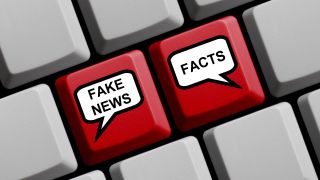As the school year begins in a range of ways this fall, the utilization of electronic resources will most likely increase, if that is possible.
To support that, there are several reminders teachers should provide to students about searching for materials in our digital world. Shubham Agarwal from Makeuseof.com identified six types of Google searches that should not be blindly trusted. Agarwal’s No. 1 item is medical searches; this might explain why doctors can buy a coffee mug that states “Please don’t confuse your Google Search with my medical degree.”
The other areas considered as having a high potential for inaccuracy include conspiracy theories, religious practices, financial information, chemistry-related searches, and breaking news. We know that Wikipedia is not always a reliable source, but it is something students are used to. It is often good for mainstream news articles, archival sources, and other legitimate electronic sources, and often, entries include references to print materials.
How should students go about looking for information? We need to ensure they understand three things about the information search process: clearly defining the search strategy, evaluating the value of sources retrieved, and citing information of value from those sources.
In planning any search, students need to be fully aware of the type of sources they are looking for and where to find them.
The University of Helsinki has an excellent English language blog articulating the information search process that also contains a few sample exercises. Teachers may want to start the year with a treasure hunt activity that asks students to answer questions and identify their search strategy for finding the information, and then document the source in which it was found.
Some sample questions might be:
- What did whiskey trade at in New York on July 23, 1856?
- When was it decided that only the pope could canonize saints?
- Who is Harlan James and what did he help to found?
- Please find and print a diagram of the space shuttle’s cockpit controls
- Where can I find the China Daily indexed and available in full text?
This activity can help students learn to properly cite sources. The search strategies for most of these questions are straightforward but are much easier if student understand the search process. Google offers several levels of search help; Bing provides similar search help.
Often, the university library staff will be willing to create a unique research landing page for your department or course so the best resources available for the discipline can be highlighted for students. Some examples include Winona State University’s Leadership Education research guide, which focuses on digital resources, and a specific topical guide such as Loras College’s History of Loras College guide, which is more inclusive of digital, print, and archival materials.
Evaluating sources can be approached in a number of ways. Several models exist focusing on between four and six facets. One example is AAOCC, which stands for authority, accuracy, objectivity, currency, and coverage. A set of flash cards based upon the AAOCC model is available.
One of the easiest models to remember is the CRAAP test (Currency, Relevance, Authority, Accuracy, and Purpose). An excellent set of materials is available at Bow Valley College explaining the criteria for evaluating sources using the CRAAP test. A short pdf explaining the CRAAP test is available via CSU Chico.
Dalhousie University articulates the need for six criteria when evaluating websites as sources including: authority, purpose, coverage, currency, objectivity, and accuracy.
Citing sources seems to be a struggle for many students, but with the resources available today, that should not be the case. Instructors should be encouraged to include direct links to citation tools in their syllabi or LMS, so students understand which tools the instructors believe are the most accurate. Some examples include BibMe, Cite It Fast, and Easy Bib. Purdue’s Online Writing Lab (OWL) does provide a good factsheet on what citation generators can and cannot do.
These tools are useful but are not perfect. A step beyond citation generators would be to expose students to a variety of source management tools, such as End Note or Zotero.
Reaching out to the university library staff is an excellent option as they can often best share the sites and tools that work best for the assignments one is planning. Hopefully, these ideas will help instructors ensure their students are selecting the best resources available to them.
Steven M. Baule, is Assistant Professor, Leadership Education, at Winona State University

